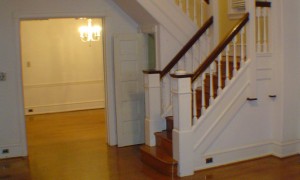Somewhere between 88 and 97 percent of the houses in Philadelphia were built before 1978, or before the use of lead-based paint was banned. If you live in an older home, there are a few reasons why you should start the process of deleading it. Exposure to lead, through consumption of paint dust or paint chips, can cause high blood pressure in adults, damage to the nervous system of children, and reproductive issues. Lead is found not only inside the house, but also outside—in the soil. Soil that contains lead can be a risk to you if you track it inside on your shoes or if you eat vegetables that you grow in it.
Temporary Fixes
When it comes to deleading your home, you can take steps to temporarily fix the issue, or you can take steps to remove the lead for good. A temporary solution will need your ongoing attention because you will have to continue to maintain the fix. One example of a temporary fix for lead is to repair an area that has lead-based paint. Wipe down the area to remove any dust and clean up any large paint chips that have come off. Paint over the damaged area with a fresh coat of paint.
If there is lead in the soil outside of the home, plant grasses in the area. The grass will minimize the amount of soil that gets on your shoes, reducing the amount of contaminated soil you bring inside. Pets and children will also be less likely to try to eat soil that is covered with grass and plants. Avoid planting a vegetable or other edible plant garden directly in the ground if your soil contains lead; instead, use raised beds with lead-free soil that you can obtain from a garden shop or elsewhere.
Permanent Solutions
Deleading your home permanently requires the assistance of a certified professional. The state’s Department of Labor and Industry has a list of all the contractors who are certified. Before you renovate your home or attempt to remove lead-based paint yourself, give the department a call to find a reputable lead abatement contractor.
During the lead abatement process, you should find alternate lodgings. The removal process will release a considerable amount of dust, which is a hazard. If you cannot stay in a hotel or elsewhere during the removal, have the area being worked on sealed off in order to keep any dust from getting out into the rest of the home.
Cleanup
Cleanup is an essential part of the deleading process. You should clean the house promptly after removing lead to get rid of any dust. The Environmental Protection Agency has set limits for what it considers to be safe levels of lead. On floors, the amount of lead dust must be less than 40 micrograms per square foot. The amount of lead dust on window sills must be less than 250 micrograms per square foot. For window troughs, the limit is 400 micrograms per square foot.
Follow-up
It is essential to check on the state of your home every so often after deleading. If you simply cleaned up and painted over an area that had lead-based paint, inspect it at least once a year to make sure the paint has not become damaged again. Test the air in the house for lead dust every two years to be sure that the levels are still below the limits.
Image Source: Flickr
[cf]skyword_tracking_tag[/cf]







[…] It is essential to check on the …read more […]
[…] It is essential to check on the …read more […]